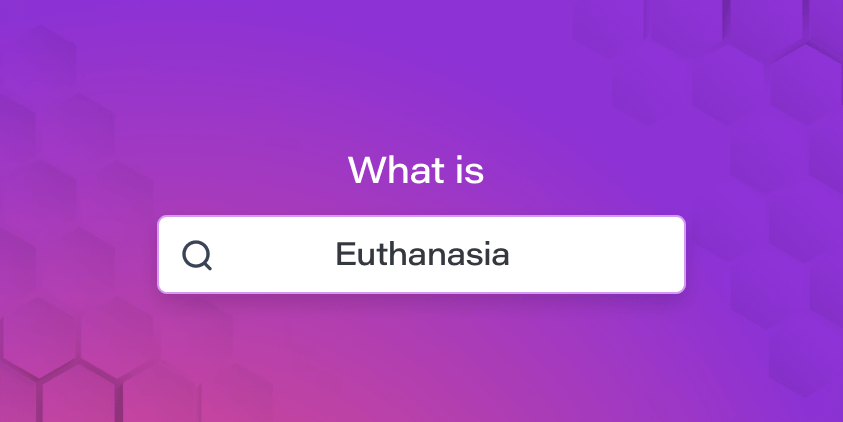Euthanasia: An In-Depth Guide for Nurses
This article was written in collaboration with Christine T. and ChatGPT, our little helper developed by OpenAI.

Definition
Euthanasia is the act of intentionally ending a person’s life to relieve their suffering or pain, typically in cases of terminal illness. It is a highly debated and controversial topic with legal and ethical considerations that vary across different countries and regions.
Related Terms
- Assisted Suicide: The act of intentionally providing a person with the means to end their life, such as a lethal dose of medication, while leaving the final act to the person themselves.
- Passive Euthanasia: The process of withholding or withdrawing life-sustaining treatments, allowing a person to die naturally.
- Voluntary Euthanasia: The intentional ending of a person’s life with their explicit request and consent.
Synonyms, Definitions, and Examples
| Synonym | Definition | Example |
|---|---|---|
| Physician-Assisted Death | A form of euthanasia where a physician provides the means for a person to end their life, typically through a prescription for a lethal dose of medication. | A terminally ill patient requests a prescription for a lethal dose of medication from their physician. |
| Mercy Killing | The act of ending a person’s life to alleviate their suffering, often in situations where they cannot make the decision for themselves. | A family member administers a lethal dose of medication to a loved one in a coma who is experiencing severe pain. |
| Right to Die | The belief that an individual has the right to choose the manner and timing of their death, often in the context of terminal illness and euthanasia. | An advocacy group campaigns for the legalization of euthanasia, arguing for the right to die with dignity. |
Assessment Techniques and Tools
While nurses are not directly involved in performing euthanasia, they play a crucial role in the assessment and care of patients who may be considering this option. Assessment techniques and tools include:
- Thoroughly evaluating the patient’s medical condition, prognosis, and pain management options.
- Assessing the patient’s mental and emotional state, including their capacity to make informed decisions.
- Discussing the patient’s wishes, values, and beliefs regarding end-of-life care and euthanasia.
- Collaborating with physicians, mental health professionals, and other members of the healthcare team to ensure that the patient’s needs and preferences are met.
- Providing support and resources for the patient and their family to help them navigate the decision-making process.
Assessment Frameworks
Assessment frameworks for euthanasia may vary depending on the legal and ethical guidelines in a specific region. Nurses should familiarize themselves with their local regulations and professional codes of conduct. Assessment frameworks typically involve:
- Establishing the patient’s eligibility for euthanasia based on criteria such as terminal illness, unbearable suffering, and informed consent.
- Adhering to a multidisciplinary approach that involves physicians, mental health professionals, and other healthcare providers.
- Ensuring that the patient’s decision is voluntary, informed, and free from coercion or external pressure.
- Documenting the patient’s wishes, assessments, and decision-making process in their medical records.
Assessment Documentation
Proper documentation is crucial in the assessment of euthanasia requests. This may include:
- Comprehensive medical records outlining the patient’s diagnosis, prognosis, and treatment options.
- Documentation of the patient’s mental and emotional state, including assessments by mental health professionals when required.
- Records of discussions with the patient and their family regarding euthanasia and end-of-life care.
- Written and signed consent forms, where applicable, indicating the patient’s voluntary and informed decision to pursue euthanasia.
Legal and Ethical Considerations
Euthanasia is a complex and controversial issue with significant legal and ethical implications. Nurses must be aware of the laws and professional guidelines in their jurisdiction and adhere to them strictly. Some key considerations include:
- Respecting the autonomy and dignity of the patient while ensuring that their decision is informed and voluntary.
- Acting within the scope of nursing practice and following professional codes of conduct.
- Maintaining confidentiality and privacy throughout the decision-making process.
- Providing emotional support and resources for the patient and their family without imposing personal beliefs or opinions.
Real-Life Examples or Case Studies
There are numerous real-life examples and case studies involving euthanasia, which highlight the complexity and ethical dilemmas surrounding this issue. Some examples include:
- The case of Brittany Maynard, a young woman with terminal brain cancer who chose to end her life through physician-assisted death in Oregon, USA.
- The Terri Schiavo case, which involved a legal battle between family members over the withdrawal of life support for a woman in a persistent vegetative state.
- The Netherlands and Belgium, where euthanasia and physician-assisted suicide have been legalized under strict regulations and safeguards.
Resources and References
For further information and resources on euthanasia, consider the following:
- World Health Organization (WHO) resources on end-of-life care and palliative care.
- National and international nursing associations and their guidelines on euthanasia and end-of-life care.
- Books and articles on the ethical, legal, and practical aspects of euthanasia, such as “The Right to Die: Understanding Euthanasia” by Derek Humphry and “The Case Against Assisted Suicide: For the Right to End-of-Life Care” edited by Kathleen Foley and Herbert Hendin.
- Ethics committees or institutional review boards within your healthcare organization that can provide guidance and support.
- Continuing education programs and workshops on end-of-life care, ethics, and communication skills for nurses.
Conclusion
Euthanasia is a complex and emotionally charged issue that requires nurses to be well-informed and compassionate in their approach to assessment and care. By understanding the legal and ethical considerations, utilizing appropriate assessment techniques and frameworks, and providing support to patients and their families, nurses can play a vital role in helping individuals navigate the difficult decisions surrounding end-of-life care.
